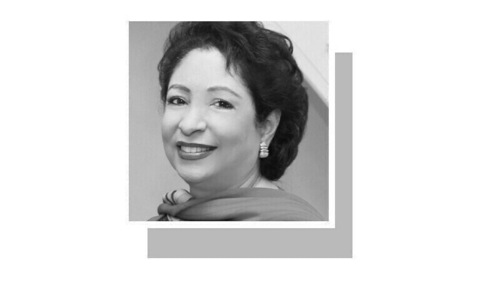THE PML-N government once again finds itself amidst a needless controversy; this time over the 100MW project at the Quaid-i-Azam solar park in Bahawalpur. And while this may partly be the consequence of loud and boisterous claims of ending the power crisis, and for which there has been little action, it largely reflects the PML-N government’s failure to manage public expectations.
The story that should have been told at the very outset was simple: the world over, solar power is the fastest-growing resource for renewable energy. This trend is being driven by a steep decline in the cost of solar panels — whose cost has dropped to one-third in the last five years.
Compared to this — according to the US Energy Information Administration — equipment cost of wind power has come down by half, while the cost of nuclear capacity has declined by 20pc and thermal by 10pc in the last five years. Going forward, costs of solar are expected to decline still further, and at a faster rate than other technologies.
The time had come for Pakistan to enter the game. It needed to acquire the technology and build the technological ecosystem for its widespread adoption. The first project would be a demonstration project that the Punjab government would itself undertake. This would remove the risk for subsequent projects. Even though the cost of electricity would be high at this stage, subsequent projects will ride the declining cost curve and deliver cheaper power.
Under our energy vision, solar and wind power will remain marginal.
In 2012, Pakistan had similarly entered the game of wind power and experienced a similar effect. End of story. This could have been published as a policy document and given widespread circulation to pre-empt any controversy.
The PML-N lost another opportunity when last week, to rebut the criticisms in the media, the chief minister of Punjab addressed a news conference. In this he termed it the ‘most viable venture in the country’ and claimed it to be more cost effective than wind energy. (In fact the reverse is true. This is the most expensive electric power in the country.)
In support of his claim he quoted the capital cost of $1.33 million per megawatt for solar and compared it to $2.1m for wind power. This is obfuscation at its best. What was not mentioned was that you get only half the output from each installed megawatt of solar (plant factor 17.5 pc) as compared to wind (plant factor 35 pc).
Effectively then, it takes 2MW of solar capacity — and a cost of $2.66m — to get the same energy you would from 1MW of installed capacity of wind power — which would cost $2.1m. This makes solar photovoltaic technology 27pc more expensive than wind on ‘output from installed capacity’ basis.
A more straightforward comparison would have been between the levellised upfront tariff being offered by the electric power regulator Nepra — 14 cents per unit for solar projects and 10.6 cents for wind. If, as the Punjab chief minister claims, the cost of solar is cheaper than wind, then why should solar power be 32pc more expensive?
Two days after Shahbaz Sharif’s news conference in Lahore, Sindh’s provincial ministers Murad Ali Shah and Nisar Khuhro in Karachi accused the federal government of obstructing the development of wind power projects in Sindh. They also questioned the ban imposed by the federal government on wind power projects and why it was reluctant to build grid capacity to evacuate power from these projects.
These are valid concerns which the federal government should note. A potential 3,000MW of power projects (and arguably over $5 billion in FDI) is currently choked because of this one single bottleneck. The PML-N federal government ought to embrace these national projects instead of being seen to be obstructing them.
In his news conference, the Punjab chief minister went on to suggest that over the years, solar power production would rival that from hydro. This was a ludicrous claim to make. Hydroelectricity contributes 30pc (or nearly 7,000 MW) of Pakistan’s total electricity demand; and that percentage is likely to increase as new dams are built at Diamer-Bhasha, Bunji and Dasu.
Under Pakistan’s energy vision, solar (and wind) will always remain marginal while the base load will be carried by thermal and nuclear plants. Hydropower will remain a major contributor. Even then, it will be years before the solar cost curve can drop tariffs to the level of say the 8.5 cents per unit that was offered to the recently completed hydro-power IPP, Laraib Energy.
That said, solar is a long-term strategic play and I have previously supported its development in these columns. Instead of tit-for-tat rebuttals, Shahbaz Sharif should explain his case more from the strategic vantage point suggested above.
The writer is a business strategist and entrepreneur.
Published in Dawn, September 16th, 2015
On a mobile phone? Get the Dawn Mobile App: Apple Store | Google Play











































